M
I
C
R
O
S
T
O
R
Y
O
F
A
R
T
........................................................

NOW COMPLETED:

........................................................
MICROSTORY OF ART
ONLINE JOURNAL FOR ART, CONNOISSEURSHIP
AND CULTURAL JOURNALISM
........................................................
INDEX | PINBOARD | MICROSTORIES |
FEATURES | SPECIAL EDITIONS |
HISTORY AND THEORY OF ATTRIBUTION |
ETHNOGRAPHY OF CONNOISSEURSHIP |
SEARCH

........................................................



 >MICROSTORIES
>MICROSTORIES
- Richard Serra
- Martin Scorsese
- Claude Simon
- Sunshine
- Werner Herzog
- The Creation
- Marcel Duchamp
- Nino Rota
- Wölfflin and Woolf
- Hansjörg Schneider
- Kraftort Arkadien
- Visual Biography
- Schlaraffenleben
- Die Geisteswissenschaften
- The Voyeur
- Buzzword Sustainability
- Paul Verlaine
- Tao Yuanming
- New Beginning
- Seneca
- Still Lifes
- Charles Baudelaire
- Frédéric Chopin
- The Art History of Sustainability
- Wang Wei
- Solarpunk
- Historians of Light
- Lepanto
- Renaturalization
- Plates
- Snow in Provence
- Learning to See
- Picasso Dictionaries
- Peach Blossom Spring
- Picasso Tourism
- Tipping Points
- Sviatoslav Richter
- Weather Reports
- Treasure Hunt
- Another Snowscape in Picasso
- Picasso in 2023
- Dragon Veins
- The Gloomy Day
- The Art of the Pentimento
- Reforestation
- The Status of Painting
- Emergency Supply
- Punctuality
- Watching Traffic
- Zhong Kui
- How Painting Survived the 1990s
- Confirmation Bias
- Sustainability and Luxury
- Garage Bands
- Picasso and Artificial Intelligence
- Eyes of Tomorrow
- Picasso in 2023 2
- Gluing Oneself to Something
- Suburbia
- Bamboo
- Sustainability and Carpe Diem 1
- Interviews with Bruegel
- Sustainability and Carpe Diem 2
- Coffee & Sugar
- Bamboo 2
- Picasso in 2023 3
- Sustainability and Carpe Diem 3
- Cherry Orchard
- Old Magazines
- Chance
- Nick Drake
- Harlequin
- The Smartphone & the Art Book
- Atlas Syndrome
- The Kitchen
- Atlas Syndrome 2
- Consideration
- Tori Amos
- School
- Orchard Auctioning Day
- The Hundred Years’ War
- Sócrates
- Chameleon
- Nefertiti Bust
- Picasso as a Computer
- Sunflowers
- Philemon & Baucis
- Ode to the Radio
- Childhood
- Wimmelbild
- Restitution
- Nick Drake 2
- Wishful Thinking
- Sundays
- The Independent Scholar
- September
- The Fisherman by Pirosmani
- Microadventure
- Sociology
- Salvator Mundi
- Chillon
- Appassionata
- Amber
- Homer
- Berlin
- Planet Walk
- Improvisation
- Seeing Picasso
- These Nice Kids
- Robber
- The One
- The Sea Turtle
- Zoo
- Through the Hush
- Wunderkammer
- I Do Not Seek, I Find
- Shopping Mall
- Food Hamper
- The Secretary
- This Gate
- Nor Rainy Day
- House on a Hill
- Beautiful Island
- Second-hand Bookstore
- Flat
- Slap in the Face
- Serra, Wenkenpark
- Apologies
- The Bells
- Nordmann Fir
- Picasso Wanting To Be Poor
- Picasso, Pirosmani
- A Brief History of Sculpture
- 24 Sunsets
- Rusty Phoenix
- Glove
- Wintry Stanza
- A Song
- Like A Beatle
- Catching An Orange
- Solar Bees
- Permaculture

 >FEATURES
>FEATURES
- Van Gogh On Connoisseurship
- Two Museum’s Men
- Ende Pintrix and the City in Flames
- Titian, Leonardo and the Blue Hour
- The Man with the Golden Helmet: a documentation
- Un Jury d’admission à l’expertise
- Learning to See in Hitler’s Munich
- Leonardo da Vinci and Switzerland
- The Blue Hour Continued
- The Blue Hour in Louis Malle
- Kafka in the Blue Hour
- Blue Matisse
- Blue Hours of Hamburg and LA
- A Brief History of the Cranberry
- The Other Liberale in the House
- The Blue Hour in Raphael
- Who Did Invent the Blue Hour?
- Monet on Sustainability
- Velázquez and Sustainability
- The Blue Hour in Guillaume Apollinaire
- Van Gogh on Sustainability
- The Blue Hour in Marcel Proust
- Picasso and Sustainability
- The Contemporary Blue Hour
- The Blue Hour in 1492
- The Blue Hour in Hopper and Rothko
- Hopper and Sustainability
- The Blue Hour in Ecotopia
- The Hour Blue in Joan Mitchell
- Explaining the Twilight
- The Twilight of Thaw
- The Blue Hour in Pierre Bonnard
- Explaining the Twilight 2
- Picasso on Stalin
- Rubens on Sustainability
- The Salvator Mundi in Bruegel and Rubens
- The Blue Hour in Leonardo da Vinci and Poussin
- The Blue Hour in Rimbaud
- Faking the Dawn
- Frost and Thaw in Ilya Ehrenburg
- Picasso, Stalin, Beria
- Picasso, Solzhenitsyn and the Gulag
- Shostakovich on Picasso
- Hélène Parmelin in 1956
- Historians of Picasso Blue
- Picasso Travelling to Moscow 1
- The Blue Hour in Caravaggio
- Picasso Travelling to Moscow 2
- Picasso, the Knife Game and the Unsettling in Art
- Some Notes on Leonardo da Vinci and Slavery
- Picasso Moving to the Swiss Goldcoast
- The Blue Hour in Camus
- The Blue Hour in Symbolism and Surrealism
- Caspar David Friedrich in His Element
- Exhibiting the Northern Light
- Caspar David Friedrich in His Element 2
- Robert Schumann and the History of the Nocturne
- The Blue Hour in Robert Schumann
- Caspar David Friedrich and Sustainability
- The Twilight of Thaw 2
- Multicultural Twilight
- The Blue Hour in Anton Chekhov
- The Blue Hour in Medieval Art
- Twilight Photography
- The Blue Hour in Bob Dylan
- Iconography of Optimism

 >SPECIAL EDITIONS
>SPECIAL EDITIONS
- Visions of Cosmopolis
- Mona Lisa Landscapes
- Turner and Ruskin at Rheinfelden
- Painters On TV & On TV
- Spazzacamini in Art
- A Last Glance at Le Jardin de Daubigny
- The Experimental Cicerone
- A Dictionary of Imaginary Art Historical Works
- Iconography of Blogging
- Begegnung auf dem Münsterplatz
- Cecom
- Das Projekt Visual Apprenticeship
- Those Who See More
- A Fox on Seeing with the Heart
- Sammlung Werner Weisbach
- Daubigny Revisited
- Some Salvator Mundi Microstories
- Some Salvator Mundi Afterthougths
- Some Salvator Mundi Variations
- Some Salvator Mundi Revisions
- A Salvator Mundi Questionnaire
- A Salvator Mundi Puzzle
- Unknown Melzi
- Francis I and the Crown of Charlemagne
- From Amboise to Fontainebleau
- Drones Above Chambord
- Looking Back At Conques
- Flaubert At Fontainebleau
- Images of Imperial Ideology
- The Chronicles of Santa Maria delle Grazie
- Seeing Right Through Someone
- Melzi the Secretary
- Eying Glass
- A Foil to the Mona Lisa
- A Renaissance of the Cartoon
- Sketching a Family Tree
- Venetian Variations
- A Brief History of Digital Restoring
- A Consortium of Painters
- Leonardeschi and Landscape
- A Christ in Profile
- Learning to See in Spanish Milan
- A History of Gestures
- Leonardo and Josquin
- A Renaissance of the Hybrid
- Suida and Heydenreich
- The Watershed
- Three Veils
- From Beginning to End
- Connoisseurship of AI
- Twilight and Enlightenment
- The Blue Hour in Chinese Painting
- Dusk and Dawn at La Californie
- Iconography of Sustainability
- The Blue Hour in Goethe and Stendhal
- The Sky in Verlaine
- The Blue Hour in Paul Klee
- Iconography of Sustainability 2
- The Blue Hour in Charles Baudelaire
- From Bruegel to Solarpunk
- Some Salvator Mundi Documentaries
- Some More Salvator Mundi Monkey Business
- The Windsor Sleeve
- Brigitte Bardot’s Encounter with Picasso
- Art Historians and Historians
- A Salvator Mundi Chronicle
- The Salvator Mundi and the French Revolution
- The Fontainebleau Group
- The Encounter of Harry Truman with Pablo Picasso
- The Fontainebleau Group Continued
- The Windsor Sleeve Continued
- The Salvator Mundi in Early Netherlandish Painting 1
- Some Salvator Mundi Resources
- A New Salvator Mundi Questionnaire
- The Woman in Picasso
- The Yarborough Group
- Melzi, Figino and the Mona Lisa
- The Yarborough Group Continued
- A Salvator Mundi Global History
- The Salvator Mundi in Medieval Art
- The Salvator Mundi in Medieval Art 2
- The Salvator Mundi in Early Netherlandish Painting 2


 >HISTORY AND THEORY OF ATTRIBUTION
>HISTORY AND THEORY OF ATTRIBUTION
- The Mysterious »Donna Laura Minghetti-Leonardo«
- Assorted Demons of Connoisseurship
- Panofsky Meets Morelli
- Discovering the Eye of Sherlock Holmes
- Handling the Left-handed Hatchings Argument
- Visual History of Connoisseurship
- Alexander Perrig
- Connoisseurship in 2666
- What Postmodernity Has Done to Connoisseurship
- Dividing Four Fab Hands
- A Leonardesque Ambassador
- Test Cases in Connoisseurship
- A Raphael Expertise
- How to Tell Titian from Giorgione
- Louise Richter
- The Unique Property in the History of Connoisseurship
- An Expertise by Berenson
- The Book of Expertises
- An Album of Expertises
- An Expertise by Friedländer
- A Salvator Mundi Provenance
- How to Tell Leonardo from Luini
- An Expertise by Crowe and Cavalcaselle
- An Expertise by Bayersdorfer
- An Expertise by Hermann Voss
- An Expertise by Hofstede de Groot
- Leonardeschi Gold Rush
- An Unknown »Vermeer«
- An Expertise by Roberto Longhi
- An Expertise by Federico Zeri
- A Salvator Mundi Geography
- A Salvator Mundi Atlas
- The Bias of Superficiality
- 32 Ways of Looking at a Puzzle
- James Cahill versus Zhang Daqian
- Five Fallacies in Attribution
- On Why Art History Cannot Be Outsourced to Art Dealers
- On Why Artificial Intelligence Has No Place in Connoisseurship
- Salvator Mundi Scholarship in 2016
- Leonardo da Vinci at the Courts
- The Story of the Lost Axe
- The Last Bruegel
- A Titian Questionnaire
- On Where and Why the Salvator Mundi Authentication Did Fail
- The Problem of Deattribution

 >ETHNOGRAPHY OF CONNOISSEURSHIP
>ETHNOGRAPHY OF CONNOISSEURSHIP
MICROSTORY OF ART
ONLINE JOURNAL FOR ART, CONNOISSEURSHIP
AND CULTURAL JOURNALISM
........................................................

***
ARCHIVE AND FURTHER PROJECTS

1) PRINT


***
2) E-PRODUCTIONS


........................................................

........................................................

........................................................
FORTHCOMING:


***
3) VARIA

........................................................

........................................................

........................................................

........................................................

........................................................
***
THE GIOVANNI MORELLI MONOGRAPH

- The Giovanni Morelli Monograph
........................................................
MICROSTORY OF ART
ONLINE JOURNAL FOR ART, CONNOISSEURSHIP AND CULTURAL JOURNALISM
HOME
Leonardo da Vinci
Microstory of Art V –
Leonardo da Vinci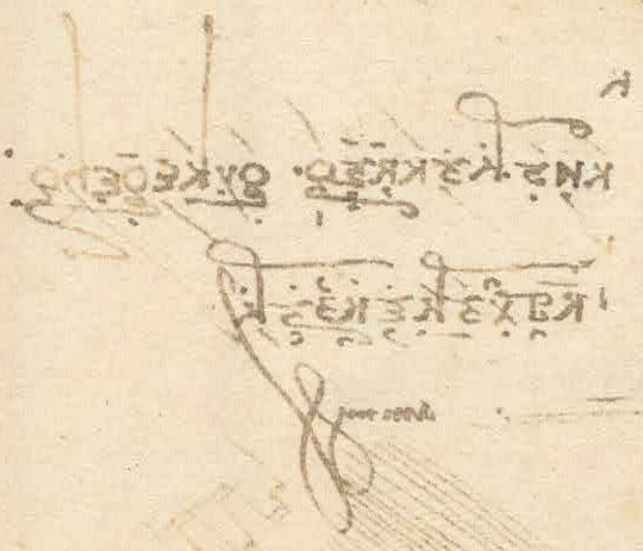
| Manuscript B 100v |
|---|
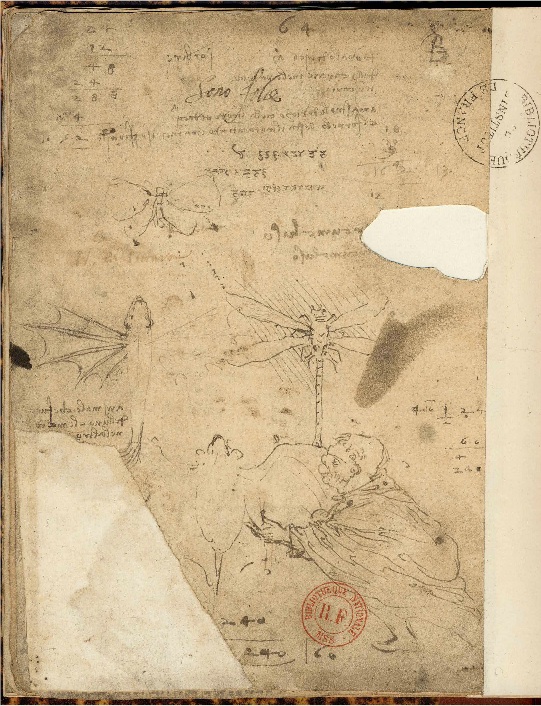 |
Here, among other things, we look at Leonardo da Vinci’s bat. But the following is more about the »among other things«.
This is one of my favourite Leonardo da Vinci sheets, which is why we show it here behind bulletproof glass. It’s Manuscript B from Paris, folio 100v (source: leonardodigitale.com). Leonardo in his thirties, living in Milan. A dedicated fan of Renaissance cartoon artists, but no: this is Leonardo da Vinci, the historic Leonardo (and, in some sense, i.e. among other things, a cartoon artist as well). Quite messy, at it seems. But we’ll see, what we will find out about a universal genius being messy.
If one re-uses a sheet. Again and again. Would one say that the finally resulting sheet is in its character accidental?
In a way, yes. Because the combination of elements does not occur according to an organizing plan. But in a way, no. Because all you do in life, has to do with you, in some sense or the other. And what results is you. And open to interpretation as to your personality.
What we face here, not least, is the problem of Leonardo-philology or Leonardo-edition. What to do with the above sheet? Are we allowed to ignore the written, just simply being interested in Leonardo’s bat (and the three other flying organisms)? Or is it just about the combination of the written and drawn, about the relation or the inbetween? Are we allowed to cut those drawings that interest us out? Or is it just about the weird combination of drawings, a combination resulting of someone using and re-using a sheet again and again?
Let’s figure to sort at least one problem out: The stamps are owner’s stamps. Let’s try to forget them, because the provenance does not cause a problem here. But on the other hand: the stamps just make look the sheet as sort of a letter. Written in the past and sent to us, thus being being on its way for about 500 years. And we see: It’s not that easy to sort anything out here.
*

(Picture: comicvine.com)

(Picture: blogintomystery.com)

(Picture: abduzeedo.com)
Four unidentified potentially flying objects we see represented here: a butterfly, a sort of a flying fish (http://en.wikipedia.org/wiki/Flying_fish ; the elder research, however, has seen a dragonfly here), a dragonfly, and the before-mentioned bat. To the flying fish Leonardo has written that this is an animal fleeing from one element to another, probably referring to water and air. And here the written actually does highlight what one use of that sheet was probably was about. Here someone was musing about how four different living creatures are capable, by their flying capacities, of moving between the elements and the spaces associated with that elements. The bat, if not thinking of batman here, would be capable to move between the heavens and the earth (the drawing of a man on the lower right side of the sheets is being interpreted as a men kneeling in reveration…).
This sheet, like many other Leonardo sheets, is a dream of any semiologist. Because we have conventional letters, mirror-written letters, undeciphered, probabaly exotic letters, numbers, images, not very elaborated images, even apt of being used as logos. We have Italian and latin words. And all the inbetween relations.
Let’s think for a moment of German poet Novalis here (http://en.wikipedia.org/wiki/Novalis), about his poem Wenn nicht mehr Zahlen und Figuren (http://de.wikipedia.org/wiki/Wenn_nicht_mehr_Zahlen_und_Figuren). If no longer numbers und figures are the key to all creatures on earth… About his poem that questions that the use of numbers and figures is an appropriate way to say and to know something substantial about the universe we’re living in. And recommending instead the being a key of poems and fairytales.

(Picture: moma.org)
In a way the Leonardo sheet can be interpreted as being an example for both attitudes: The Leonardo that is using the sheet for calculations (one actually unfinished) and for illustrative figures represents the rational use of numbers and figures within our universe. But we might also think of a Leonardo dismissing what he has drawn, written and calculated (because the re-using might also being interpreteted as a giving up of something already done; and do we really know if Leonardo tended to address his world exclusively in a rational way? Maybe he was rather oscillating between a rational and a more mystical approach to worldly things, not mentioning metaphysical things for once…). And we might think about our own musing on this sheet like a musing on figures and numbers, or: this is the point I am getting to, about the inbetween. About the poetic potential of this sheet, that, on a comparatively little space of paper, opens a whole universe by assembling various gestures of writing and drawing.
Not least a universe of languages and letters. Because if we forget for a moment that we also see Leonardo da Vinci willing to improve his Latin skills, we see a Leonardo probably playing around with other alphabets that conventionally used in Renaissance Italy. And is it enough to say (if we pretend to be Leonardo philologists) that there are several lines of undeciphered letters on that sheet? And what about the result of that playing around? Is it a musing about letters, arabic and latin letters, leading anywhere? Or is it like with the one calculation Leonardo did not finish a mere gesture, a playing around without any result, exept of producing more dreamlike musing and a mere contemplating (but not any longer using) of numbers and of figures…?
*
Last but not least: How did Leonardo look at this particular sheet, or at any sheet that looked like this? Did he look at such papers again at all? Well, we don’t know. But the question still remains, if he thought that of all he ever did draw and write something systematic and rationally organized would once arise? Or was he once, it’s just a thought, to suddenly to think that exactly what was on that sheet of paper did represent the universe in a poetical and more in-depth way than any systematic manual on anything could ever provide. Because the sheet assembles gestures to rationally represent fragments of the universe (the four animals, assembled like four illustrative examples in a book on flying animals) and in its stopping to go further, in its re-using the sheet for trivial (?) calculations of which one is not even finished, it even, indirectly, designates the framentary rational gesture as such. In its musing about, yes, exotic letters and Latin words, the sheet assembles gestures of curiosity, and then, in another re-use, goes on to do something else.
It is an aide-mémoire, but not only of trivial things: It’s about a master that has to remind himself that he has to see a master Lodovico. And that he has to get or to think about yellow ambra. But on another level it’s an aide-mémoire of being distracted as such, a reminding of having been distracted that results from that sheet. In storing all the gestures of curiosity, all the musings on natural and literary things. And last but not least: it is a fascinating, almost fancyful assembly of gestures that could, if it was a sheet of Joseph Beuys or of Cy Twombly, interpreted as being a work of art.
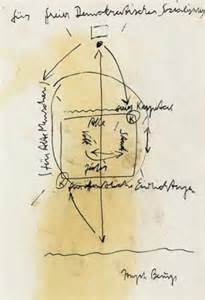
(Picture: art.findartinfo.com)
We doubt that Leonardo could see this sheet as such, but we are not completely sure. What if he had a moment, when looking at this sheet and thinking that this sheet does interlink things like things haver never been interlinked before. By merely assembling gestures, and by inviting to fill the inbetween space between the various languages and ways to address the world (by numbers, figures and symbols) with your own questions and your own choices how to interpret the universe. In a mystical or rational way. And in such a Joseph Beuys drawing (http://en.wikipedia.org/wiki/Joseph_Beuys) would be an as reasonable way to interpret this sheet as another Leonardo edition, guided by whatever principles of philology would be (one one is tempted to ask, if not philology by nature is excluding the mystical element necessary to deal with what we face here?)
In sum: Even if Leonardo da Vinci was inclined to think of what he found in his own notes as a failing in what he actually had wanted, as the failing of an all-too often distracted man, who simply got not enough time to systematically elaborate his view of nature and his practical ideas – it is still possible to confront this sheet with modern works of art, that use as strategies what 500 years ago was the result of simply being focussed for moments, of being distracted or interrupted, maybe of being bored and being drawn to other things. And all this resulted of using and re-using a mere sheet.
We might think of Mallarmé (http://en.wikipedia.org/wiki/Stéphane_Mallarmé), and we might think especially of Cy Twombly (http://en.wikipedia.org/wiki/Cy_Twombly), also in being inspired by Mallarmé. Words and letters might be interpreted as gestures within a space, represented by a white page or a white canvas. And it is not the rationally informed will to visually represent anything that makes our universe. But about the assembling and combining of fragments and the organizing of fragmentary elements for exactly what Novalis had thought of would be the result: another, less superficial and in the end less fragmentary (because of potentially including all possible spaces and relations inbetween) way to address, to reflect upon and last but not least: to represent the universe. This might be thought as the ambition of art, and what art would be about.
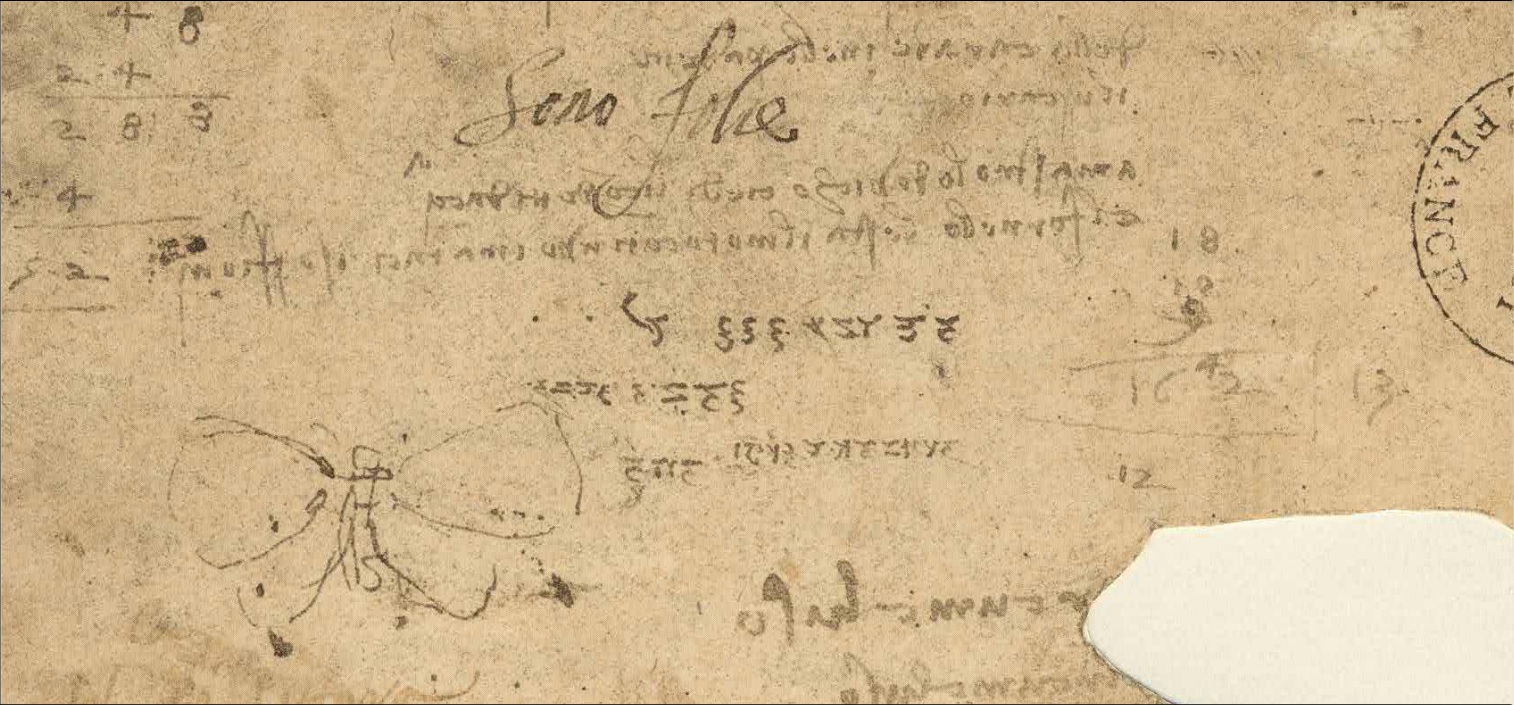
If no longer numbers and figures…

Detail from Manuscript B 3r (source: leonardodigitale.com) – for an attempt to interpret what Leonardo is doing here – see my Leonardo da Vinci im Orient. Geschichte eines europäischen Mythos
MICROSTORY OF ART
ONLINE JOURNAL FOR ART, CONNOISSEURSHIP AND CULTURAL JOURNALISM
HOME
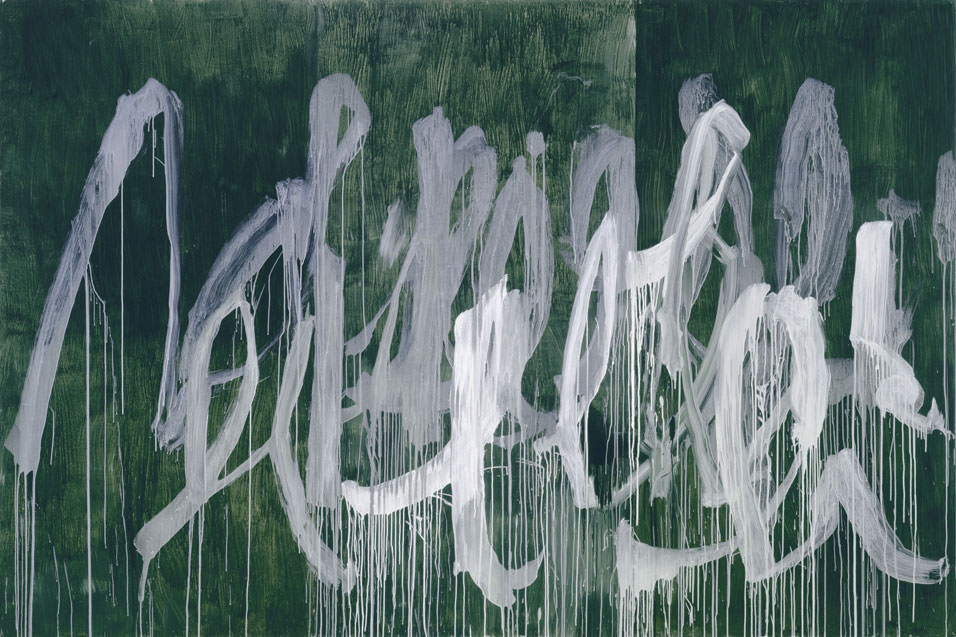
(Picture: full-stop.net)
© DS